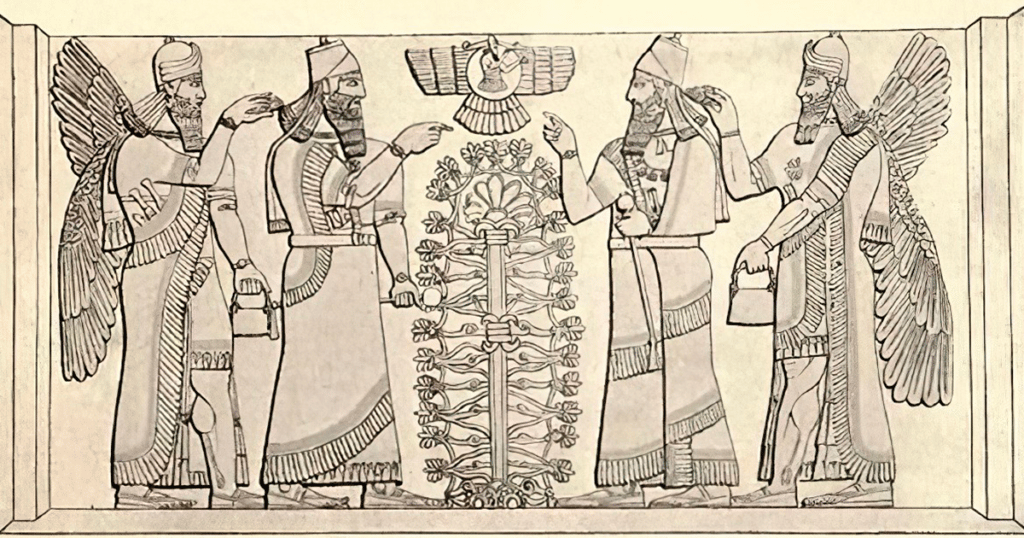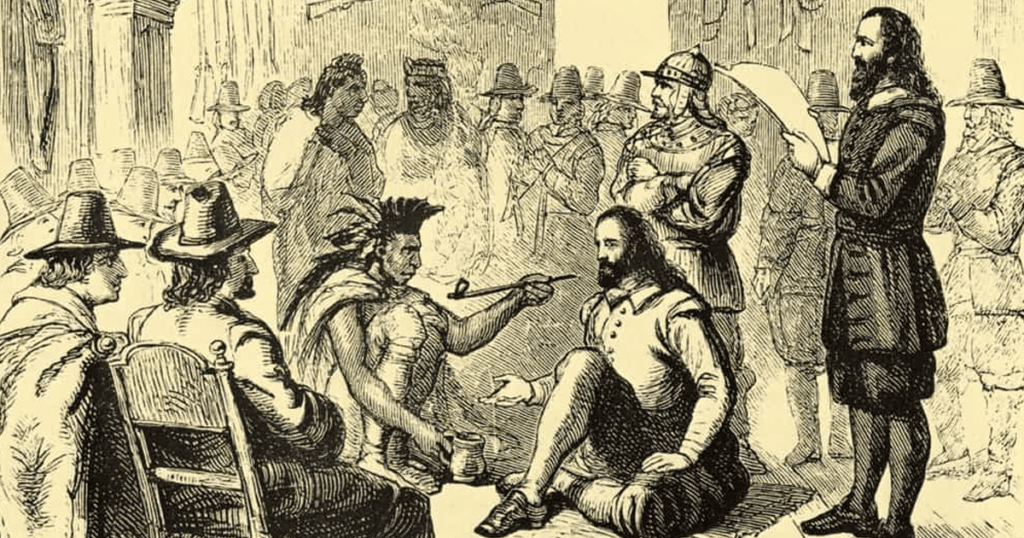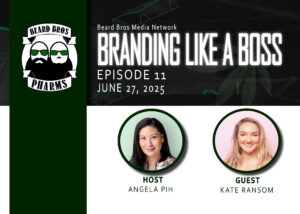Hemp has a long history of global use as a food, fiber, fuel, and medicine. With archaeological evidence of its use dating back to ancient civilizations in Northern China as early as 10,000 BC and starting from rope imprints on pottery, hemp was one of the first farmed fiber plants. Its turbulent past depicts a multifaceted plant that has aroused debate, uncertainty, and fear, and is still misunderstood by some. With the cannabis industry — and therefore hemp — being under the spotlight, we’d like to trace back the history of this marvelous plant.
Earliest Known Hemp Use
Humans have used hemp from 10,000 years before the Common Era, which was between 4,000 and 3,000 BCE. It was revealed that a piece of earthenware with a hempen string was found at a location in Yuang Shun, Taiwan, which marks the first known instance of industrial hemp use.
After 2,000 years, hemp was not only used to make pottery but was also consumed as food and utilized as a medicine in Taiwan and China. Archaeologists studying at a site close to the modern Iraq-Iran border discovered that hemp cloth had begun to be used in Mesopotamia about the same time. These remarkable recoveries show that hemp has been used in a variety of ways for at least six millennia before the beginning of written history.

Hemp And Early Chinese Civilizations
China is home to some of the richest hemp histories. Silk is another thing that the Chinese are known for, and by 4 000 BCE, they began utilizing hemp as a substitute for silk in clothing. Twelve centuries later, Emperor Shennong imparted his expertise in hemp cultivation to his subjects, allowing for the widespread use of hemp-based garments.
Since hemp was so widely available in China, it was extensively discussed in the Shu Ching, one of the first texts in recorded human history. In Shantung Province, hemp was reportedly planted surrounding every lord’s castle and was frequently given as a gift by royalty to peasants. Hemp was also reportedly utilized for military gear and weapons.
The earliest hemp paper mills started to arise in China and the Middle East about the eighth century BCE. The first paper made entirely of hemp was created by the Chinese in 150 BCE, several centuries later. Around the second or third century of the Common Era, China produced the first documented record written on any type of paper, demonstrating their amazing advances with hemp paper.
A Buddhist text was written on paper that was primarily made of hemp in this document. Japan, China’s neighbor, will develop a significant hemp-based invention a few centuries later. The earliest religious text wholly composed of hemp paper was Hyakumanto Darani, a book of prayers published in the year 770.
Early Hemp Around The World
China wasn’t the first ancient culture to praise hemp’s benefits. Hemp rope was utilized in Egypt to aid in the construction of the pyramids. The dead in Mongolia were laid to rest with various hemp-based objects.
Indians started using hemp for food, clothing, and medicine after the Scythians brought it to the subcontinent. Hemp made its first appearance in Europe around 1,200 BCE. Four hundred years later, the Punic people of North Africa began using hemp extensively for caulking.
Numerous early European civilizations relied heavily on hemp. As early as 600 BCE, the Russians were using hemp rope. Around 200 BCE, Greek sailors first used hemp rope on their ships. One hundred years after the Greeks, the British started using hemp ropes. Archaeologists have discovered a jar with hemp seeds and leaves in Germany that dates to around 500 BCE, proving that hemp was also used in German civilization at the time.
Hemp had begun to be connected with European monarchy by the sixth century CE, and Queen Arnemunde of France was buried in hemp-made clothing after she passed away in 570. Additionally, hemp played an important role in Northern European Viking civilization. The Vikings imported hemp to Denmark and Iceland about the year 800 and utilized it to make rope, sailcloth, caulk, and fishing lines.
Hemp As Medicine
Hemp started to establish itself in the medicinal world not long after the common era started. Hemp originally appeared in Roman pharmacopeia in the year 79. Sixty-one years later, Hua Tuo, a physician in China, started utilizing hemp powder and wine as anesthetics during surgical procedures. These links with medicine persisted for generations. Hemp could be used as an enema to treat some cases of colic, according to a report by the Arab physician Aqrabadhin of Al-Samarqandi from the 10th century.
Hemp Prior To The Early Modern Era
The formalization of government support for hemp in Europe began during the Age of Exploration. The rule that King Henry VIII of England established in 1535, mandating that landowners grow hemp on at least one-fourth of an acre of their property or face financial penalties, may serve as the best example of this change.
Hemp was successfully grown in Chile by the Spanish around 1545. This was accomplished due to the simplicity and usefulness of using hemp to produce ropes and sailcloth. The Dutch started using windmills the same year to more efficiently break hemp for industrial uses.
Hemp In The US
The United States has possibly the richest and most volatile history with hemp. Hemp was first grown for rope, paper, and lamp fuel in the American colonies in 1606. Hemp was a favorite crop at the Jamestown Colony, where it was used to make rope, sails, and clothes.
Before and after America became independent in the 18th century, Americans residing in specific colonies and states were legally obligated to produce hemp. It is hardly surprising that rules of this nature were prevalent; Thomas Jefferson, a founding father, penned a preliminary version of the Declaration of Independence on hemp paper.
Hemp was grown on the properties of both Thomas Jefferson and George Washington. All facets of American culture continued to use hemp well into the 19th century; President Abraham Lincoln even used hemp seed oil to light his home lamps. The USS Constitution, the first ship ever constructed by the Navy, utilized a remarkable 120 pounds of hemp for her lining, rope, and sailcloth, which is maybe the most amazing fact of all.
America continued to extol the benefits of hemp well into the 20th century. Results showing that hemp produced four times as much paper as trees were produced by no less a body than the United States Department of Agriculture. George W. Schlichten, an inventor, submitted a patent for a device that made it easier to separate the fibers from the internal core of hemp, adding hemp to America’s outstanding scientific resume.
From the early 17th century to much of the 20th century, the United States led the world in the industrial use of hemp, but this period also saw widespread use of hemp worldwide. In fact, until the 1920s, hemp textiles made up around 80% of all apparel produced in the world.
Hemp In The Modern Era
The United States changed course on its centuries-long embrace of hemp’s numerous uses just before the commencement of World War II. Hemp production was extensively taxed after the 1937 passage of the Marihuana Tax Act. Hemp manufacturing was outlawed in 1937. Shortly after, Canada followed suit and enacted an amendment to the Opium and Narcotics Drug Act in 1938 that outlawed the production of hemp.
Despite these severe limitations on hemp production, businessman Henry Ford created a version of his ground-breaking Model T automobile that operated on hemp seed oil in 1940. This Model T was not only powered by hemp, but it also had panels made of hemp plastic that had ten times the impact strength of steel.
The United States entered World War II after the bombing of Pearl Harbor in December 1941, supporting the Allied cause; Canada was already a member of the Allies. To aid in their respective countries’ war efforts, both the United States and Canada relaxed their bans on hemp production in 1942. The American and Canadian governments both chose to enforce their current restrictions against hemp after World War II, despite the enormous benefits that hemp had during the conflict.
Although hemp cultivation remained mostly outlawed across the country, the United States did permit it to continue in limited amounts until 1957, the year that farmers in Wisconsin planted the final legally permitted commercial hemp fields. The Controlled Substances Act’s passage in 1970 signaled the height of hemp prohibition in the US. Anyone who farmed hemp in the United States was subject to severe penalties under this statute, which listed hemp as a Schedule I drug.
In 1998, the United States started to permit the importation of food-grade hemp seed and oil, signaling the beginning of a thaw in the country’s prohibitionist attitudes regarding industrial hemp. DEA, a ruling by the US 9th Circuit Court of Appeals, permanently safeguarded the sale of hemp-based food and personal care items. Six years later, additional protections for commercial uses of hemp were allowed.
Even bigger improvements were made in 2007 when two farmers from North Dakota were granted the industry’s first hemp commercial cultivation permits in more than 50 years. The 2014 Farm Bill furthered the legalization of hemp by allowing research institutes to set up hemp production pilot programs for use in scientific or agricultural studies.
Finally, the hemp plant, its seeds, and all products derived from it are no longer considered illegal under the 2018 Agriculture Improvement Act. Unless they resided in one of the four states (Idaho, Mississippi, New Hampshire, or South Dakota) that continued to forbid hemp cultivation within their borders, Americans were once again completely free to engage in hemp production.

Hemp is used today for a wide range of items all around the world. We sincerely hope that the United States will never again forbid producing one of the hemp plant’s many eco-friendly and useful products.
Enjoyed that first hit? Come chill with us every week at the “Friday Sesh” for a freshly packed bowl of the week’s best cannabis news!
- Ohio’s Senate Bill 56 Postponed, Leaving Details of Issue 2 Still Unresolved
- Sports Stars and Well Known Entertainers Join Forces Calling on Trump for Cannabis Reform
- Pinsky and the Brain: Bill White on His Journey to Consulting in Cannabis
- Delaware’s Recreational Cannabis Market Finally Set to Launch After Years of Challenges
- Excise Tax Increase to 19% and Its Impact on California Retailers
- Nebraska’s Governor Approves Emergency Medical Cannabis Regulations













